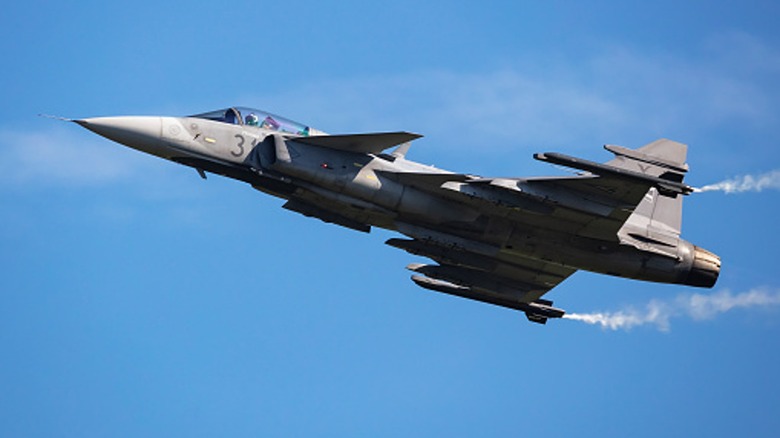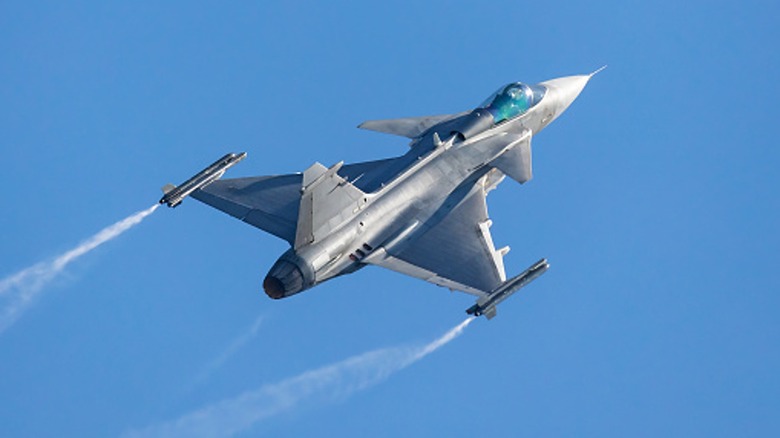What Engine Powers Saab's Gripen Fighter Jets & How Fast Can They Fly?
Did you know that Saab, the once famous automotive company, makes fighter jets? Not once upon a time, either. It builds planes that are still in use by multiple countries. It's called the Gripen, and it has a delta-wing design that's similar to the Typhoon FGR4. Despite once having an automotive arm of the company, Saab doesn't make the engine for the Gripen. For that, Saab relies on another company, GKN Aerospace, which absorbed the engine's previous maker, Volvo Aero, in 2009.
The JAS-39 Gripen is a fighter jet designed to tackle a variety of missions, from air-to-air intercepts to bombing high-valued locations. Saab manufactures the Gripen C and Gripen E series of jets, each using a different engine. The Gripen C is powered by a single Volvo RM12 turbofan engine, an engine that Saab proudly boasts has been "Supporting Gripen for more than 300,000 flight hours." It's a licensed version of General Electric's F404 engine that the original F/A-18 Hornet used. Volvo has added some unique modifications to the engine, some of which enabled it to perform with biofuel.
The E-series of jets, on the other hand, uses the more advanced RM16 engine, an offshoot of the F414 engine found in the Super Hornet. The Gripen E is the newest variant of the Gripen, making its first flight in 2017 and finally entering service in both Brazil's and Sweden's Air Forces in 2019. Both variants might use different engines, but they go about the same speed.
Saab's Gripen can keep up with the F-16
Speed is a vital aspect of a fighter jet. Fighter jet manufacturers consider a number of parameters when choosing an engine to install, including its top airspeed. All fighter jets need to be able to reach their destination fast when the mission calls for it and pull out of the action just as fast. Saab went with the RM12 and, eventually, the RM16 because they checked off every box for Gripen's mission requirements. Saab is especially proud of the RM12 engine, calling it one of Sweden's most successful exports with hopes of continuing that success with RM16.
The RM12 and RM16 engines both produce the same maximum speed for the Gripen, but it's where the plane is flying that matters. The pilot is going to get more bang for their buck at a higher altitude, closer to the Gripen's service ceiling of 52,500 feet. At that altitude, it can go twice as fast as the speed of sound, keeping up with America's F-16 Falcon. However, if the plane stays low, closer to sea level, it can only go a maximum of 1,400 km/h (or 870 mph), which is only a little faster than Mach 1.
Going slow isn't necessarily a detriment to fighter jets, though. If they engage with other aircraft, a drop in speed helps them maneuver better and increases their chances of gaining an advantage.

